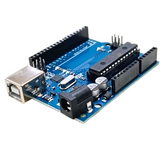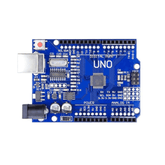What is digitalwrite in arduino
Summary
Discover the essentials of the digitalWrite() function in Arduino with our comprehensive blog. Start with an introduction to this fundamental function, understanding what digitalWrite() is and how it operates. Learn the relationship between digitalWrite() and pinMode(), crucial for setting pin modes correctly. Explore common applications, from controlling LEDs to reading sensor inputs. This guide is perfect for beginners and anyone looking to enhance their Arduino programming skills. Click now to master digitalWrite() and elevate your Arduino projects!
Introduction:
An essential tool for both hobbyists and professionals, Arduino is a potent open-source electrical platform made possible by the smooth fusion of cutting-edge hardware and software technology.
In addition to its ease of interpretation of sensory data provided from several inputs, Arduino is also a powerful message decoder and lighting system controller. The function "digitalWrite()," which is very useful and allows users to control and manipulate the output of digital pins, is one of the most important aspects of Arduino programming.
The incredibly versatile and easy-to-use Arduino platform is proof of the virtually endless possibilities that can be achieved when cutting-edge technology is combined with inventiveness and imagination. It is the go-to option for anyone wishing to explore due to its efficiency and versatility.
Look out our various collections of Original Arduino products.
What is digitalWrite():
Employing the digitalWrite() function is a basic programming technique, especially when working with microcontrollers such as Arduino. This feature is one of the most important ways to change the voltage level of a particular pin, taking it from high to low.
Primarily, the function digitalWrite() is used to send signal data to a single pin that is assigned to it, which allows control over different electrical parts including motors, sensors, and LEDs. Additionally, an important idea in electrical engineering—the notion of digital control—is supported by the digitalWrite() method.

Through the use of this function, engineers can manipulate digital signals to interface with real-world components flawlessly. This opens up a wide range of applications, from basic LED blinking to complex robotics movements. For both professionals and lovers of electronics, the digitalWrite() function is essentially a key piece of equipment that provides a simple yet effective way to interface with the physical world via the digital.
To summarize, the function digitalWrite() has far more importance than just flipping pin states, which may look like a simple operation. As a means of facilitating smooth communication between software instructions and hardware responses, it represents the link between the concrete world of electronics and the abstract domain of programming logic.
Gaining control over complex systems, creating beautiful solutions, and realizing the full potential of embedded electronics design are all possible for programmers who comprehend the nuances of digitalWrite(). The syntax of digitalWrite() :
digitalWrite(pin, value)
PIN: The pin where we want to write the signal.
VALUE: The state to set the pin to , which will be either high or low.
How digitalWrite() works :
To understand how digitalWrite() works, you must first understand certain fundamental digital electronics ideas. Electrical signals can be read (input) or written (output) via digital pins on an Arduino board. When set as an output, a digital pin can be driven into two distinct states:

HIGH: Sets the pin's voltage to around 5V (on most Arduino boards), which is equivalent to a binary '1'.
LOW: Sets the pin to 0V, which is equivalent to a binary '0'.
Steps-by-Step explanation of how to work with the digitalWrite():
- Pin Initialization:
Before using the pins we need to initialise the as an output using the pinMode() function.
Syntax will be:
pinMode(pin, OUTPUT);
(2)Writing the value:
After the initialisation process, we have to made the pins high or low.
Syntax will be:
digitalWrite(pin, HIGH); || Sets the pin to 5V
digitalWrite(pin, LOW); ||Sets the pin to 0V
(3)Execution:
Then the Arduino microcontroller will then translates the signals that is the electrical signal that will send to the specific pin.
int ledPin = 13; || LED connected to digital pin 13
void setup() {
pinMode(ledPin, OUTPUT); || Initialize the digital pin as an output
}
void loop() {
digitalWrite(ledPin, HIGH); || Turn the LED on (HIGH is the voltage level)
delay(1000); || Wait for a second
digitalWrite(ledPin, LOW); || Turn the LED off by making the voltage LOW
delay(1000); || Wait for a second
}
The above provided program code is to blink the led in every seconds. Even though the pin connected is the 13th pin.
digitalWrite() and pinMode() :
The pinMode() is very important to work with the digitalWrite() , as it sets the chosen pin to function as either an input or an output. DigitalWrite() will not work as expected until the pin mode is correctly set.
(1)Setting as Output:
When the pin is set to be the output it can drive the electrical signals with the components like the Led’s and the sensors.
pinMode(pin, OUTPUT);
(2)Setting as Input:
Although not directly connected to digitalWrite(), understanding how to configure a pin as an input is also useful. When a pin is set up as an input, it can read the status of a component, such as a button or a sensor.
pinMode(pin, INPUT);
Here’s how pinMode() and digitalWrite() work together in a simple circuit with an LED and a button:
int ledPin = 13; // LED connected to digital pin 13
int buttonPin = 2; // Button connected to digital pin 2
void setup() {
pinMode(ledPin, OUTPUT); // Initialize the LED pin as an output
pinMode(buttonPin, INPUT); // Initialize the button pin as an input
}
void loop() {
int buttonState = digitalRead(buttonPin); // Read the state of the button
if (buttonState == HIGH) { // If the button is pressed
digitalWrite(ledPin, HIGH); // Turn the LED on
} else {
digitalWrite(ledPin, LOW); // Turn the LED off
}
}
In this above example, the LED turns on when the button is pressed and turns off when the button is released. pinMode() is used to set the LED pin as an output and the button pin as an input, on the other hand digitalWrite() controls the LED based on the button's state.
Common applications of the digitalWrite():
digitalWrite() is the one of the adaptable function in various applications that relies from the simplest Led’s to the various components.
- Control the LED:
One of the basic programming is the turn on and off of the led using the digitalWrite(). These will be used in the decorative LED’s and many lights.
Syntax:
digitalWrite(ledPin, HIGH); // Turn on the LED
digitalWrite(ledPin, LOW); // Turn off the LED
The provided syntax is the basic one in the blinking of the Led’s.
(2)Control the Buttons:
To interact with buttons and switches and provide user input, use digitalWrite() in coexistence with digitalRead().
Example code:
int ledPin = 13; // LED connected to digital pin 13
int buttonPin = 2; // Button connected to digital pin 2
void setup() {
pinMode(ledPin, OUTPUT); // Initialize the LED pin as an output
pinMode(buttonPin, INPUT); // Initialize the button pin as an input
}
void loop() {
int buttonState = digitalRead(buttonPin); // Read the state of the button
if (buttonState == HIGH) { // If the button is pressed
digitalWrite(ledPin, HIGH); // Turn the LED on
} else {
digitalWrite(ledPin, LOW); // Turn the LED off
}
}
Common application of the digitalWrite():
digitalWrite() is the multifaceted function that might be used in a wide range of applications, from basic LED control to complicated systems.
Here are some typical applications:
- Led control:
One of the basic application of the digitalWrite() is the blinking of the led or turning on and off the led these led will be used for the decorative purposes.
digitalWrite(ledPin, HIGH); // Turn on the LED
digitalWrite(ledPin, LOW); // Turn off the LED
- Button Interaction:
To interact with buttons and switches and provide user input, use digitalWrite() in coexistence with digitalRead().
if (digitalRead(buttonPin) == HIGH) {
digitalWrite(ledPin, HIGH); // Turn on the LED if the button is pressed
} else {
digitalWrite(ledPin, LOW); // Turn off the LED if the button is not pressed
}
- Control the Relay:
DigitalWrite() are able to function relays to turn on and off high-power appliances like heaters, motors, and other common household appliances.
digitalWrite(relayPin, HIGH); // Activate the relay
digitalWrite(relayPin, LOW); // Deactivate the relay
- Controlling the motor:
By controlling the motor the digitalWrite() can control the direction and the speed of the DC motors
digitalWrite(motorPin1, HIGH); // Set motor direction
digitalWrite(motorPin2, LOW);
- Generation of the signals:
Generate the wave signals for various applications such as PMW control, sound generation and so on.
digitalWrite(signalPin, HIGH);
delayMicroseconds(500); // Wait for 500 microseconds
digitalWrite(signalPin, LOW);
delayMicroseconds(500); // Wait for 500 microseconds
Conclusion:
digitalWrite() is a powerful and the basic function that is been used in the Arduino programming language. This function plays a cruical role in the control and deceive of digital pins, which are essential components in n number of electronic projects and the components.
By using the digitalWrite() function , users can easily use the capability to appply accurate authority over these digital pins, thereby enabling the proportion of various electronic components like LEDs, buttons, relays, motors, and many more. Arduino fans to create a wide range of inventive and interactive creations that can respond in complex ways to precise inputs and triggers.This function's innovative powers stem from its extraordinary variety in setting pins to specified states: HIGH, which represents a voltage of 5 volts, or LOW, which represents a voltage of 0 volts which will be used .








